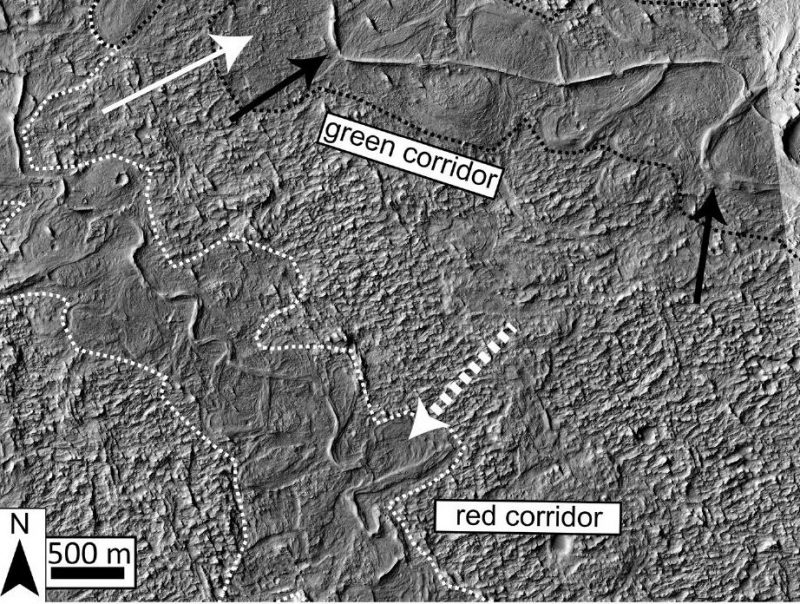
River deposits exist across the surface of Mars, and record a surface environment from over 3.5 billion years ago that was able to support liquid water at the surface. That’s according to a study published in the September 2017 issue of the Geological Society of America’s GSA Bulletin.
A region of Mars named Aeolis Dorsa contains some of the planet’s most spectacular and densely packed ancient river deposits. These deposits are observable with satellite images because they have undergone a process called “topographic inversion” – that is, deposits that once filled low river channels have been lifted up so that they now exist as ridges at the surface of the planet.
With the use of high-resolution images and topographic data from cameras on orbiting satellites, the researchers from the Jackson School of Geosciences identified pattern of deposits that were produced by the action of river, as well as changes in sedimentation styles controlled by a migratory coastline. They also develop a method to measure the acient river’s direction for some of these ridges.
Together, these measurements demonstrate that the studied river deposits once filled sharply cut valleys, according to the researchers. Here on Earth, these kinds of valleys are commonly cut and filled during falling and rising global sea level. The researchers conclude that similar falling and rising water levels in a large water body –
such as a large lake or sea – forced the formation of the paleo-valleys in their study area.
Enjoying EarthSky so far? Sign up for our free daily newsletter today!
Donate to EarthSky: Your support means the world to us
Bottom line: Planetary researchers reveal more evidence for water on ancient Mars. They say a large sedimentary basin, named Aeolis Dorsa, contains some of the planet’s most spectacular and densely packed river deposits.











